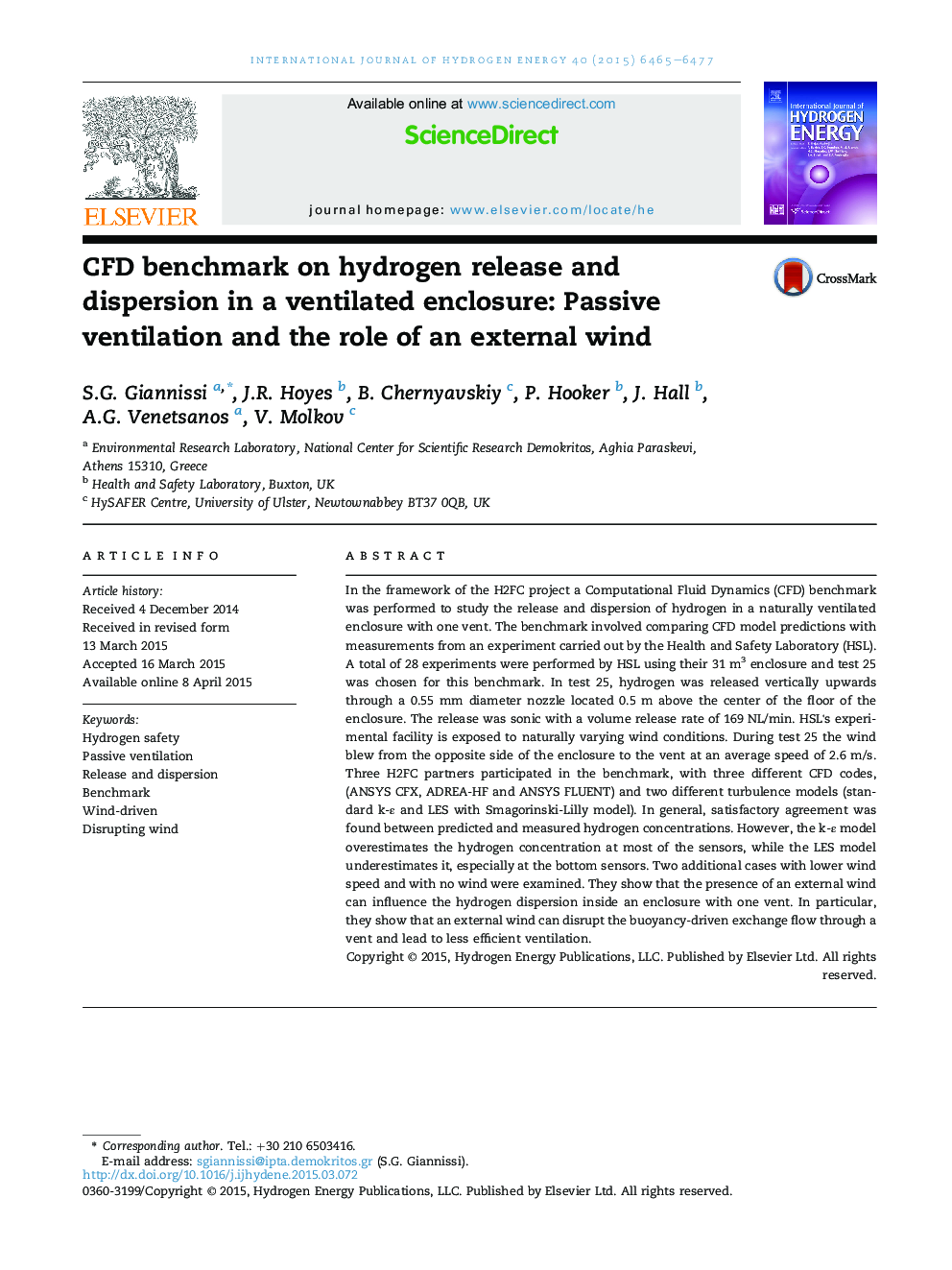| Article ID | Journal | Published Year | Pages | File Type |
|---|---|---|---|---|
| 7715578 | International Journal of Hydrogen Energy | 2015 | 13 Pages |
Abstract
In the framework of the H2FC project a Computational Fluid Dynamics (CFD) benchmark was performed to study the release and dispersion of hydrogen in a naturally ventilated enclosure with one vent. The benchmark involved comparing CFD model predictions with measurements from an experiment carried out by the Health and Safety Laboratory (HSL). A total of 28 experiments were performed by HSL using their 31 m3 enclosure and test 25 was chosen for this benchmark. In test 25, hydrogen was released vertically upwards through a 0.55 mm diameter nozzle located 0.5 m above the center of the floor of the enclosure. The release was sonic with a volume release rate of 169 NL/min. HSL's experimental facility is exposed to naturally varying wind conditions. During test 25 the wind blew from the opposite side of the enclosure to the vent at an average speed of 2.6 m/s. Three H2FC partners participated in the benchmark, with three different CFD codes, (ANSYS CFX, ADREA-HF and ANSYS FLUENT) and two different turbulence models (standard k-ε and LES with Smagorinski-Lilly model). In general, satisfactory agreement was found between predicted and measured hydrogen concentrations. However, the k-ε model overestimates the hydrogen concentration at most of the sensors, while the LES model underestimates it, especially at the bottom sensors. Two additional cases with lower wind speed and with no wind were examined. They show that the presence of an external wind can influence the hydrogen dispersion inside an enclosure with one vent. In particular, they show that an external wind can disrupt the buoyancy-driven exchange flow through a vent and lead to less efficient ventilation.
Related Topics
Physical Sciences and Engineering
Chemistry
Electrochemistry
Authors
S.G. Giannissi, J.R. Hoyes, B. Chernyavskiy, P. Hooker, J. Hall, A.G. Venetsanos, V. Molkov,
